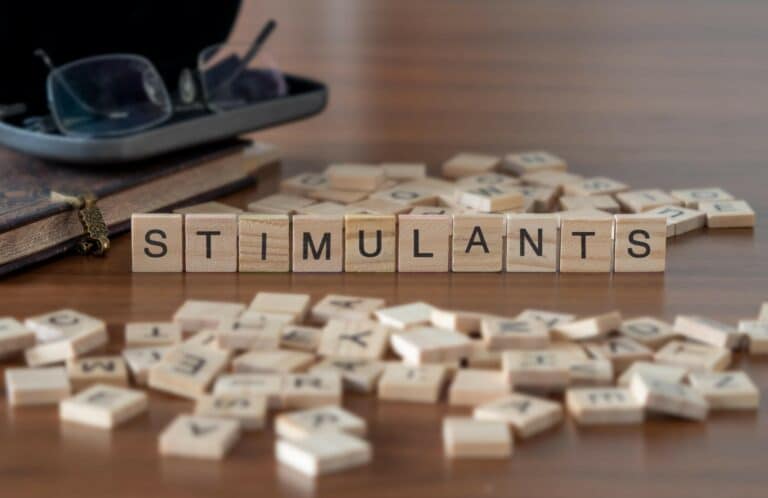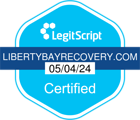According to a U.S. Department of Health and Human Services study, about five million Americans misuse prescription stimulants at least once. Doctors usually administer stimulants to treat narcolepsy and attention-deficit hyperactivity disorder. Some of the common prescription stimulants include amphetamines and methylphenidate. These drugs increase the user’s energy, cognitive function, and alertness. Unfortunately, these drugs are prime candidates for abuse due to their euphoric and performance-enhancing functions.
There is also a category of illicit stimulants like cocaine and methamphetamine, usually taken orally, through injection, or snorting. Stimulant misuse can lead to addiction, inflicting psychological distress on the body. You will require intensive therapy and treatment to overcome stimulant addiction. Start your treatment earlier to increase the chances of long-term recovery. Learning how the drug affects your body and the available treatment options is the first step toward freedom from addiction. Here’s some more information to get you started.
What Is Stimulant Abuse?
Stimulant addiction can begin as a form of experimental drug use. Others develop dependence after prolonged exposure to prescription medication. When taken as prescribed, prescription stimulants are safe and effective. Doctors prescribe them at lower doses and increase the amount gradually while monitoring the patient.
Abusing stimulants increases the risk of developing an addiction. This includes taking higher doses at frequent intervals than recommended or taking someone else’s medicine. Another form of stimulant abuse is crushing the pill or opening the capsule to snort the powder. Some people dissolve the powder in water and inject it into a vein. Stimulant abuse also includes obtaining drugs illegally to create pleasurable effects.
Drug abuse begins in many ways for various people. Some people start taking drugs to fill an emotional void, especially after losing a loved one or due to relationship problems. Others take stimulants to feel high. Teens may abuse stimulants for better concentration due to academic pressure. Others use drugs to boost their confidence and self-esteem or to fit in. Stimulants affect everyone differently depending on the type of drug used, quantity, length of use, method of use, the person’s weight, size, and health condition. In general, a higher dose of a stimulant can lead to:
- Irregular Heart Rate
- Increased Breathing
- Increased Blood Pressure
- Increased Blood Sugar
A user may develop tolerance after continued stimulant misuse. In this state, you must use higher doses to get the desired effects. This increases the risk of an overdose. Deaths involving stimulants have risen in recent years, primarily due to cocaine and methamphetamine overdose. Mixing stimulants with other drugs like opioids increases the risk of an overdose. These substances mask each other’s effects which may encourage the user to take higher doses. Some common signs of stimulants overdose include:
- Difficult Breathing
- Abdominal Cramps
- Paranoia
- Excessive Sweating
- High Body Temperature
- Convulsions
When someone overdoses on stimulants, they may also experience heart attacks and stroke, so call emergency medical services as soon as possible. Seeking treatment once you realize you have a stimulant dependency can also help prevent the risk of overdose.
Warning Signs of Stimulant Addiction
Stimulants work by increasing neurotransmitters’ norepinephrine and dopamine levels in the brain. Dopamine reinforces pleasurable behaviors in the brain’s reward circuitry. On the other hand, norepinephrine causes physical effects like changes in heart rate, blood pressure, and body temperature. In general, stimulants result in decreased fatigue and improved concentration.
Repeat use of high stimulant doses changes how the brain perceives pleasure. When functioning normally, the reward system motivates people to repeat healthy behaviors like eating or spending time with family. But a surge in dopamine in the reward system may lead to behaviors like drug misuse. Over time, you lose control over the drug and will need to take the substance for your body to function normally. If your loved ones exhibit most of the signs below, they could suffer from stimulant addiction.
- Taking higher doses of prescription stimulants
- Unexplained change of character
- Neglecting family, work, or school responsibilities
- Getting into legal trouble
- Forging prescriptions
- Requesting early refills
- Frequent dilated pupils
- Sleeping and eating less than usual
- Appearing unusually energetic
- Sudden change in hobbies
- Isolation from friends and family
- Neglecting personal hygiene
- Unexplained money problems
While some people may associate drug addiction with a lack of morals, this complex disease can affect anyone. Parental influence and a person’s environment can also expose someone to substance use. Factors that can increase the risk of stimulants abuse include:
- A family history of drug abuse
- Low self-esteem
- Participation in competitive sports
- Family history of mental health illnesses
- Easy access to stimulants
- Expose to trauma
- Stressful working conditions
- Peer pressure
Staging an Addiction Intervention
Unfortunately, only a small number of people suffering from substance use disorder receive the required treatment. Some are afraid of the lifestyle change that comes with recovery. There is also too much stigma surrounding addiction which can deter people from seeking help. Others aren’t ready to stop taking the drug and are afraid that coming out with their addiction problem would affect their job. Whatever your reasons, the benefits of seeking addiction treatment outweigh the fear. Living drug-free will improve your productivity, relationships, and quality of life.
As soon as you note that your loved one shows signs of addiction, try convincing them to seek treatment. Approach the person calmly with no judgment when they are sober. Point out how the drug affects their lives. Offer to support your loved one when going through treatment. If your loved one doesn’t accept help, stage an intervention with a professional for more guidance.
Stimulants Addiction Treatment Process
Only a medical professional can diagnose stimulant use disorder. First, the doctor will evaluate the client to see if they have been using copious amounts of the substance for a long time. To be considered addicted, the user should also show signs like an inability to reduce consumption, intense stimulant cravings, and continued substance use, even when it causes harm to the client and their loved ones. After diagnosis, your doctor should guide you through the right treatment plan for your needs.
Your doctor may recommend the inpatient treatment program if you have a severe substance use disorder. For this option, the client stays in the rehab facility for close monitoring and care for 30 to 90 days. Consider this treatment option if you previously relapsed or live in a trigger-filled home. When preparing to get into inpatient treatment, speak to your employer and inform them that you will be away for some time. You also need to make living arrangements for your children.
People with less severe cases of stimulant use disorder, good physical health, a stable living environment, and a sound support system may consider outpatient treatment. You will have to attend various treatment sessions in the rehab center for a few hours and then head home. Outpatient rehab allows you to continue caring for your family, attend school, or work while on treatment.
Clients requiring more intense treatment than the outpatient program offers but still need to live at home can consider partial hospitalization. For this program, you receive high-level care during the day for about four to six hours, five days a week. Irrespective of your chosen treatment plan, stimulant addiction treatment entails the following processes.
Detoxification
After an extended period of use, your brain becomes reliant on stimulants to function. If you cease using the drugs, your body will have difficulty readjusting to function independently. This may result in some unpleasant withdrawal symptoms, which can be challenging to cope with. In the first few hours after your last stimulant dose, you may begin to experience the following withdrawal symptoms.
-
- Anxiety
- Agitation
- Intense cravings
- Mood swings
- Fatigue
- Depression
About 24 hours later, you experience sleepiness, depressed mood, increased appetite, and low energy levels. Heavy stimulant users also experience hallucinations and paranoia. Most of these symptoms start to subside within the first week, but drug cravings may become more intense at this time. You may also experience extreme depression and fatigue. Acute withdrawal symptoms, including cravings, insomnia, and depression, continue weeks later.
Without professional assistance, withdrawal symptoms like mood swings and depression could lead to self-harm and suicidal thoughts. People with an underlying mental illness may struggle with severe depression during withdrawal. It’s often challenging to withdraw from stimulants alone in your home environment. A professional will safely flush simulants out of your body during medical detox. The doctor will offer medication to make depression, insomnia, anxiety, and other withdrawal symptoms more manageable. You will also receive emotional support and professional guidance during this potentially turbulent phase.
Therapy
Most people struggling with substance use disorder also have an underlying mental health issue. For example, based on a study, amphetamines use can result in psychosis, suicidality, and depression. This is where therapy comes in to help modify a person’s behavior, feelings, and drug use expectations, which helps reduce stress and effectively manage triggers. Some effective therapy approaches to treat stimulant addiction include the following.
Individual Therapy
Through individual therapy, a counselor will help you find the root cause of your addiction. You will better understand how addiction impacts your health, learn how to recognize triggers, and develop coping techniques to help you navigate life without drugs.
Group Therapy
Group therapy connects you with peers going through similar problems, which gives you a safe space to share your experiences. It reduces isolation and gives you a chance to witness other people’s recovery, which instills a sense of hope.
Family Therapy
Addiction affects each family member differently, from emotional distress, impaired attachments, and violence to economic hardships. Family therapy will help address conflicts, improve communication, and rebuild trust in a family. This will lead to improved health and well-being in the entire family.
Motivational Interviewing
Motivational interviewing strengthens the client’s motivation to maintain sobriety. Your therapist will help you understand the motive behind certain behaviors and emphasize the importance of change to help you overcome internal battles that affect your willingness to quit drugs.
Cognitive-behavioral Therapy (CBT)
CBT makes you more aware of your thoughts, feelings, and behaviors to help you understand how they can lead to unhealthy patterns like drug abuse. In addition, it enables you to take a more practical point of view when faced with difficulties to avoid negative emotions that cause anxiety, depression, and addiction.
Contingency Management
Contingency Management involves giving tangible rewards to the client to reinforce positive behaviors. For instance, you may receive a gift card or voucher upon confirmation of a negative urine screen.
Aftercare
Addiction treatment doesn’t stop after detox and rehabilitation. You will need ongoing treatment to maintain long-term sobriety. Talk with your therapist to help you develop an effective aftercare plan tailored to your needs and circumstances. You can join a 12-step program to receive encouragement and resources to help you build better-coping skills. Alumni programs are another terrific way to stay connected with the former staff and colleagues in the rehab center. A sober living home will help you safely transition from the rehab center into the community with minimal risks of relapse. These residential facilities have strict rules and offer a supportive environment for people recovering from addiction.
Get Help Today
Deciding to quit drugs and enrolling in a rehab facility like Liberty Bay Recovery are some of the most critical steps in addiction recovery. Once at Liberty Bay Recovery, your doctor will recommend the most effective treatment plan for stimulant use disorder that involve medications, rehabilitation, support groups, and therapy. While working on recovery, some days will feel more difficult than others. But, despite the challenges, continue showing up for counseling, build on healthy habits, follow through on your aftercare plan, and eventually, you will attain long-term sobriety.



